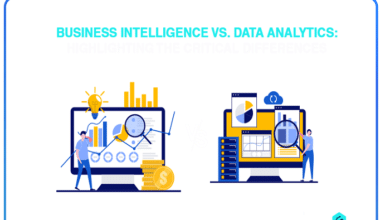Optimizing Workplace Efficiency Through Time and Attendance Systems

Key Takeaways:
- Realizing the significance of precision in time and attendance tracking for maintaining compliance and ensuring accurate pay.
- Investigating the transformative impact of advanced timekeeping solutions on organizational efficiency and employee empowerment.
- Understanding the integration of timekeeping systems with broader business ecosystems to support seamless operations.
- Evaluating the positive financial and environmental influence of adopting state-of-the-art time and attendance technology.
- Anticipating the evolution of timekeeping with the growing influence of AI and machine learning innovations.
The Importance of Accurate Timekeeping
At the heart of any company’s operations lies the necessity for accurate timekeeping. It’s a critical element that underpins several facets of business management, from employee compensation to budgetary planning. Accurately recorded time sheets help businesses comply with regulations, ward off costly legal battles over wage disputes, and simplify the intricate tasks involved with payroll processing. They also contribute to a transparent workplace atmosphere, bolstering employee confidence in the integrity of their payroll and fostering a culture of accountability and trustworthiness.
How Time and Attendance Systems Improve Workflow
Modern time and attendance tracking systems offer several advantages, including simplifying everyday workflows. Manual time tracking can be time-consuming and error-prone, preventing employees from focusing on important company duties. Automated systems remove the need for manual paperwork, minimize errors, and allow staff to concentrate on tasks that directly contribute to the company’s growth. Additionally, these systems provide rich data analytics that can be used to make informed staffing decisions in real-time and drive strategic, long-term workforce planning.
Modern Time and Attendance Solutions
The age-old punch cards and manual logs have given way to technology-infused systems that offer far more than basic functionalities. Biometrics are increasingly commonplace, virtually eliminating time theft issues such as buddy punching, which have traditionally plagued timekeeping accuracy. Cloud technology, with its ubiquitous access and real-time updates, allows for attendance management that is both flexible and secure. These contemporary solutions are foolproof and easy to use, making them a welcome upgrade from outdated predecessors.
Integration with Other Business Systems
In today’s tech-driven workspaces, time and attendance systems are often integrated with human resources, payroll, and project management systems. This integration is more than a convenience; it’s a strategic necessity that bolsters data integrity, ensures compliance, and safeguards sensitive information. Ease of integration through APIs has become a crucial consideration for businesses selecting time-tracking solutions, ensuring that various software systems communicate effectively and data flows seamlessly from one platform to another without any hitches.
Employee Self-Service Portals
Empowerment is a central theme in progressive workplaces, and employee self-service portals substantially promote this. These technologies encourage independence and responsibility by allowing employees to access their time and attendance records, request time off, and view their schedules. Mobile app functionality adapts to the needs of an increasingly on-the-go workforce, ensuring that employees can stay connected and engaged with their workplace responsibilities regardless of location.
The Environmental Impact of Digital Timekeeping
The shift towards digital timekeeping solutions also mirrors an overall movement towards environmental consciousness in business operations. Moving away from paper-based systems reduces waste and helps businesses lessen their carbon footprint. It also sends a clear message about the company’s commitment to sustainability, which can contribute positively to its public image and align with the values of environmentally conscious employees and consumers.
Analyzing the Return on Investment (ROI) of Time and Attendance Systems
When assessing the value of implementing a new time and attendance system, considering the return on investment (ROI) is essential. The direct cost savings from reduced manual labor and error rectification are substantial. Moreover, the indirect benefits, such as enhanced employee morale, lower turnover rates, and the avoidance of compliance penalties, significantly contribute to a more robust bottom line. These systems, when correctly leveraged, can be a catalyst for sustainable business growth and operational excellence.
Best Practices for Implementing Time and Attendance Systems
Integrating a new timekeeping system into an organization demands careful planning and execution. It begins with thoroughly assessing organizational needs and crafting a customized implementation plan. Effective leadership during the rollout and ongoing employee training are paramount. Anticipating and addressing concerns can mitigate resistance, easing the transition process and leading to higher system adoption rates across the organization.
Future Trends in Timekeeping Technology
The timekeeping technology landscape is rapidly evolving, with AI and machine learning poised to take center stage. These cutting-edge technologies promise to introduce a new level of automation, predictive analytics, and intelligent decision-making to workforce management. The potential benefits range from more accurate forecasting of labor needs to proactively identifying compliance risks, underscoring the growing strategic importance of timekeeping systems in the broader business ecosystem.
Conclusion
Advanced time and attendance systems have become more critical in the modern corporate world. These systems are the backbone of productive, fair, and efficient work environments. With the increasing digital transformation of the workplace, timekeeping solutions have become indispensable tools that support operational success and contribute to larger organizational goals and values. Accurately tracking employee attendance provides valuable insights that help businesses make informed decisions and optimize resources. These systems also ensure compliance with labor laws and regulations, which is vital for avoiding legal issues and maintaining a positive reputation. All in all, advanced time and attendance systems are essential for any organization to achieve operational excellence and foster a culture of fairness and productivity.




